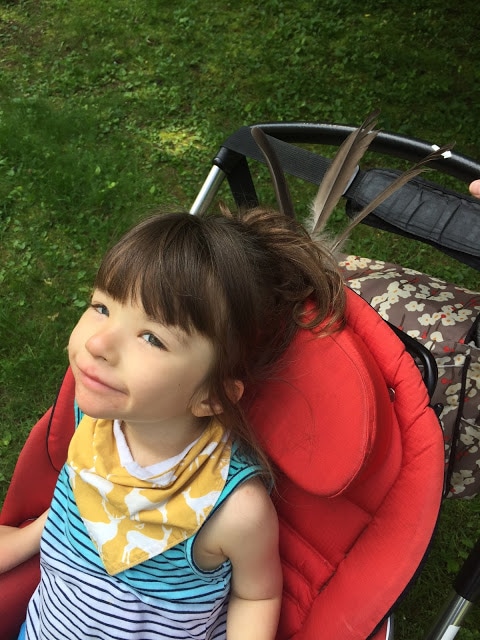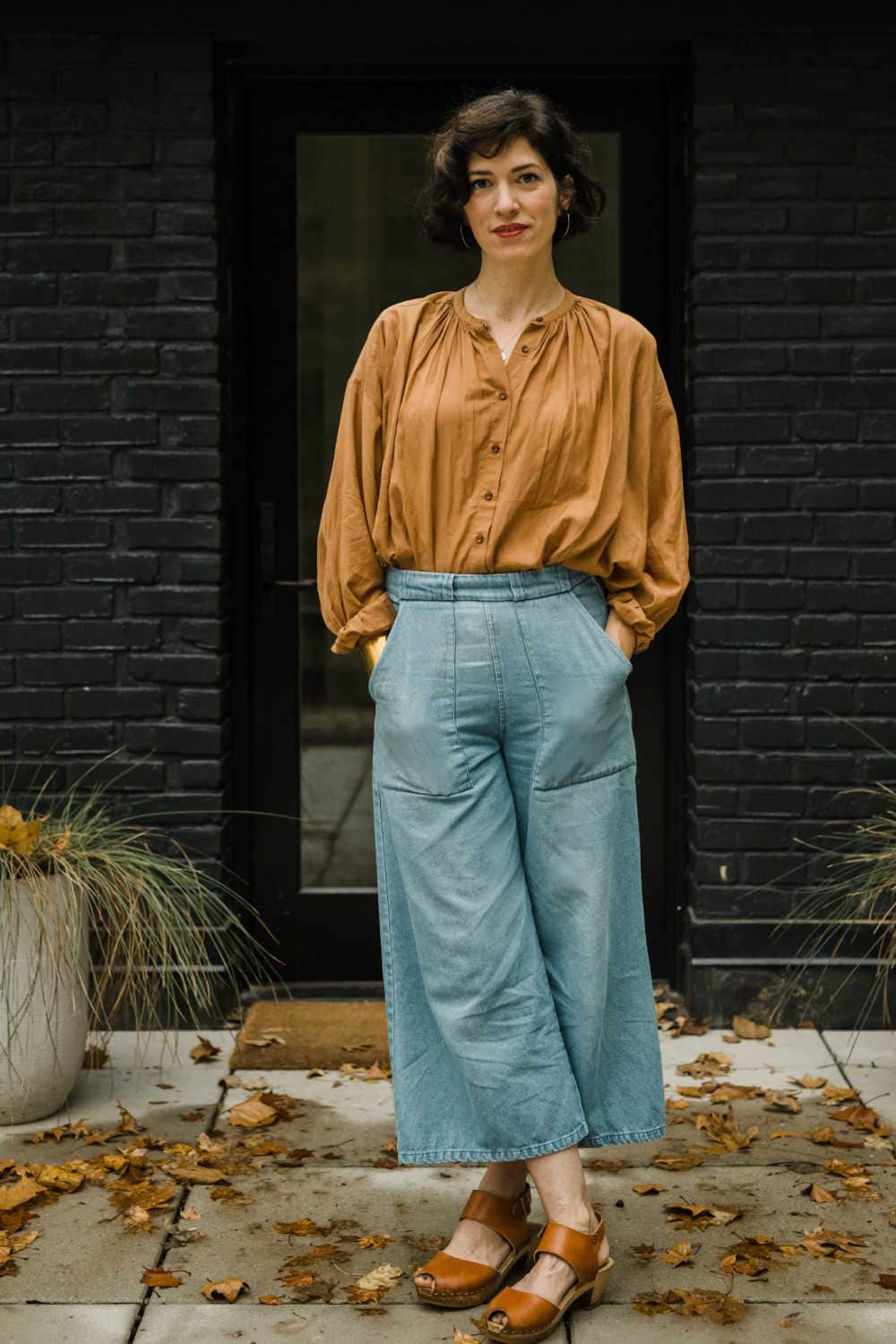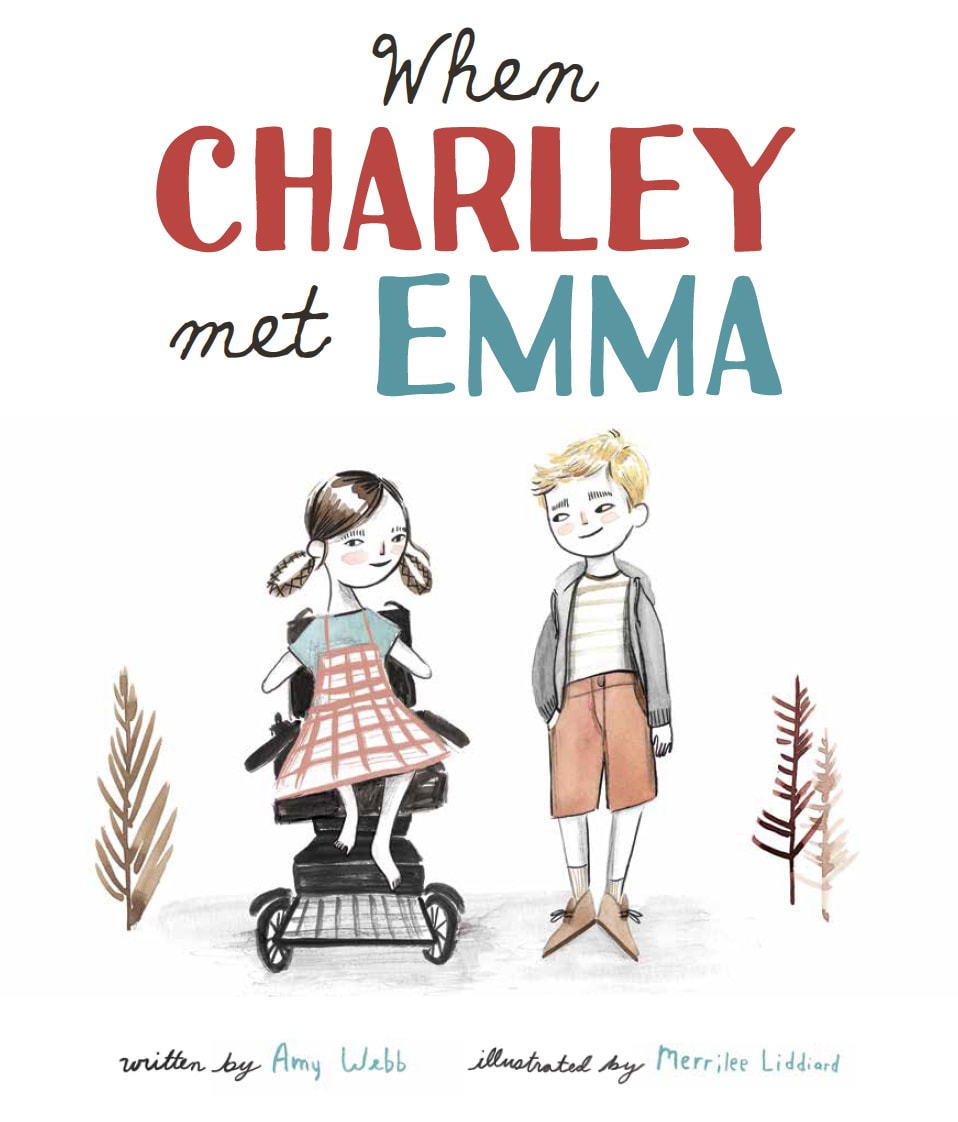I am Hillary. I’m a lot of things: a PhD, a writer, a non-profit founder, a mixer of oddball cocktails. But most importantly I am the mom of a ridiculously fun, goofy, determined, and super cute five-year-old girl named Esmé. Esmé is my best buddy, my muse, and my teacher. Esmé is also medically-fragile, severely developmentally-delayed, and a bit of a scientific mystery. When I am not car dancing with Esmé, hitting the boxing gym, or coordinating Esmé’s schedule, I am writing about her and working to raise money for medical research through the Cute Syndrome Foundation.
***************
Miggy: Hi Hillary! I’m so happy to have you here today, sharing your sweet Esmé with all of us. Let’s start at the beginning, can you take me back to the day you knew Esmé would have special needs? Was it during pregnancy, shortly after birth or sometime later? Do you remember how you felt? Can you compare those first thoughts and feelings with how you feel now?
Hillary: Hello Miggy! Thanks so much for asking me to join you on This Little Miggy today. This is going to be super fun! I always struggle with the question about how and when we understood that Esmé had special needs. In our case the process of understanding Esmé’s differences has been more of a gradual becoming than a single discovery. It is so complicated that I wrote a short book about it a year ago. Since we are still learning things about Esmé’s conditions, I’ll probably have to write another one soon!
The non-book-length answer is that we had some indication at our 20-week ultrasound that our daughter might have some medical differences, but our amniocentesis did not detect any genetic disorder. Then when she was born Esmé did not breathe well and she was very limp. She was immediately transferred to the NICU. When she was 3 months old she had a medical emergency that almost claimed her life—the subject of my second short book. Her seizures started several months after that. The extent of her developmental delays became clearer as she missed more and more milestones.
How did I feel about all of it? Honestly it all had the effect of making me feel like the ground kept shifting under my feet. In many ways it still feels that way…I’m just more comfortable making my home on the shifting ground now.
Miggy: I know that Esmé has multiple diagnoses, can you first tell us a little about the process of getting her diagnosed–how long from first red flags to actual diagnosis? And can you explain in more detail what Esmé’s needs are and how they affect your day-to-day life?
Hillary: Ok, you ready? I’m going to answer by not answering again. So sorry, but this is how we roll. Esmé isn’t exactly diagnosed in the traditional sense. To date we know that she has four separate genetic mutations on four separate genes. The first, PCDH19, was discovered just before Esmé’s second birthday. The second, SCN8A, was discovered about two years later. The last two we’ve known about for around a year. What we do not know is which of these mutations causes which (if any) of her symptoms. Her genetic mutations are so mysterious that there are several cutting-edge genetic researchers around the world working unbelievably hard to understand how all of this fits together. So, basically Esmé is expanding scientific knowledge constantly just by being such an enigma.
Daily life with Esmé is the way I would imagine it would be living with a little elven creature that you stole from the woods—she is difficult to understand, fearless, persistent, impish, and oh-so-fragile. She is five-years-old, but the size of a tall, skinny two-year-old. She is functionally non-verbal but is highly expressive, and she can read. She does not walk but she gets into everything—crawling, rolling, and attempted climbing. She is entirely tube fed—save for ice cream, which she will eat by mouth in small amounts if it is on a cone. She also has repeated infections, kidney troubles, epilepsy, severely low-tone, and a movement disorder. And regularly she gets so mad that she holds her breath, turns blue, passes out, and has a seizure.
Miggy: What are the biggest worries you face for your daughter? Conversely, what are your hopes and dreams for her?
Hillary: Everything. On both counts.
I suppose most of all I worry about and hope for a strong community for her. Kids like Esmé need people who show up for them in all sorts of ways—and for the long haul. I feel like it is my job to surround Esmé with people who show up. In some ways this has been really easy. She has a ton of people following her and cheering her on. Everyone in her medical care team is beyond exceptional. Everyone who works with Esmé adores her. The day-to-day hands-on care stuff has been harder. There are very few people who can take care of her for even a few hours. And this causes a huge amount of anxiety for me as I navigate day-to-day life, but also as I worry about her future. My deepest hope for Esmé is that she will have a deep bench of people who know how to care for her and love her in the way she deserves. Beyond that I just want her to be herself.
Miggy: Now for a lighter question, I’m a big believer in seeing the humor in life and learning to laugh, so have you ever had any funny conversations/moments you never imagined due to your special needs situations?
Hillary: I love this question! I’m right there with you on the finding humor in all of this. One of my favorite posts is one I wrote about the odd things I’ve said in the grocery store that people think are jokes—but aren’t. I find myself saying and doing things that completely confuse people all the time. Most of the best of them have to do with her feeding tube, like when I’m sucking on the end of a syringe attached to a tube that disappears under her shirt saying, “Give maman your burps!”
Miggy: Having a daughter with a wheelchair can certainly is like shining a bright “I’m different!” spotlight on them and it can often be difficult to deal with this spotlight everywhere you go. Therefore, how can people best approach or respond to Esmé? Is there something you wish other people knew so as to avoid awkward or hurtful situations and simply for the sake of education.
Hillary: Ezzy’s wheelchair actually looks quite a bit like a really super fancy (and ridiculously heavy) stroller. It has shiny rims and shocks and a bright red ergonomically shaped seat. And Ez is still so tiny that she can sort of “pass” for a sleepy toddler hitching a ride. I actually get a lot of jealous looks—dads tapping their pregnant partners’ shoulders and nodding toward us. All the while I’m thinking: this is not for you, friend. I find the whole thing hysterical.
Every once in a while I get an outright question about what brand it is—like it is the next big thing in ultra-expensive “must have” strollers. The hard part comes when I respond that it is actually a wheelchair-stroller. People sometimes look embarrassed. Sometimes they give me this horrified glance, like I’ve slapped them. Most people say pityingly, “Oh, I’m so sorry.” Here’s the thing: I never want anyone to say they are sorry about Esmé. She’s perfect. There’s nothing to be sorry about. My dream response? It is just that they would look at her—you know, like any other kid—and say, “Wow! You’ve got awesome wheels, kiddo! You’re super lucky!”
Miggy: The reason we connected at all was because I had read your post in The Mighty about an incident in a public bathroom and a woman who was trying to use the accessible stall in front of you and your disabled daughter who is in a wheelchair. You eloquently said so many things in that article that I have felt many, many times. Especially the part when you said, “I know the look she had, the look of trying to ignore the inconvenience we seemingly pose to the world around us… I see it when we take up too much space or move too slowly or need a bit of extra attention, when we ask for accommodation. Not every time. Not all the time — but more often than seems right.” I don’t know what my question is exactly, but I thought you could maybe talk about that discomfort of these situations and how you’ve adjusted to being a special needs mom who needs to be an advocate for her daughter and sometimes needs to be assertive in awkward situations where people are being rude or ignorant. Have you developed specific coping mechanisms? Do you have a formula, phrase or anything that helps?
Hillary: I mix fancy cocktails in the evening and go to a boxing gym regularly. That really helps. For real.
But you know, truthfully, I have gone through periods of time where I’ve had formulas that were a lot about my sanity—engaging and educating when that made me feel in control, shifting topics when I felt emotionally fragile, and so on. However, Ez understands everything now, and so my focus has been mostly on dealing with situations in ways that prioritize her self-esteem. A few people criticized me about that article, suggesting that I should have dressed down the mom in the bathroom then and there. I’m actually not super quick on my feet verbally (I am a writer because I’m only witty like three hours after the fact), so that was part of it. The other part was that Esmé needed the bathroom, so I wasn’t going to make her wait just to prove a point. But the biggest part was that I didn’t want to draw Esmé’s attention to the fact that someone was treating her poorly.
Miggy: Tell us something you love about your child. A special story, a personality trait or just something others might not know.
Hillary: There are so many things I love about my daughter. I could go on and on…which is a good thing to keep me in blog posts for eternity. But I will try to keep it simple. We have a family saying: “Esmé is all attitude.” She is constantly doing things that are supposed to be impossible for her. She is eager and determined and hard working. And so very joyful. I believe these character traits have kept her alive and thriving in her way. And they are what I admire most about her…what I try to learn from her.
Miggy: What is the biggest lesson you’ve learned since becoming Esmé’s mom?
Hillary: Before Ez I sort of figured that if I worked hard, did the right things, and was responsible that life would go somewhat as planned. Until I had Ez that was more or less how it worked, and it might have continued that way save for our apparently ridiculous relationship with probability. Instead when Esmé arrived I was faced with a child who not only was nothing like I had imagined, but who I was terrified was going to die. A child who almost did die. A child who is still unbelievably unusual and fragile.
But here’s the thing: Life happens. It happens to all of us. It is hard and scary and beautiful and lonely. And you deal with it. Who you are is how you deal with it. Esmé showed me this.
How I deal with it is through advocacy, through storytelling. I try to find honest bits of beauty and fear and love that show something about what it means to me to be human, to be a mother, to love another person, to care about people who are different and vulnerable. This is all a lesson about connecting, about creating little sparks of recognition with others. Because that’s all we leave, in the end: the sparks we make in the world. My daughter makes so many sparks. It is a magnificent thing to watch. I just do my best to put it all into words.
***************
Oh Hillary, that was fantastic. I love how I really get a sense of who Esme is through your writing–such a gift. And your last paragraph… I’ve re-read it several times to let it soak in a little. Creating little sparks of recognition with others and recognizing and recording those sparks that your daughter makes. It is really beautiful. I like what you said about going in cycles when it comes to your responses to other people. It is really hard to be ‘on’ all the time and to be the one who has to call other people out or be in ‘education mode.’ And like you, I’m trying to be more aware of my daughters feelings and shielding her (while I still can) from negative influences. Thanks so much for your words. Esme is a little firecracker! You can see the spark and spirit in her and obviously the apple doesn’t fall far from the tree. You’re lucky to have each other. Thanks again Hillary.
As always if you or someone you know would like to participate in the special needs spotlight please email me at thislittlemiggy at gmail dot com. You guys! I need some peeps! So PLEASE send them my way!
And have a fantastic weekend!
XO,
Miggy


.jpg)
.jpg)
.jpg)


This was so beautiful. I wish I could have a fancy cocktail with Hillary right now!!
Hi Kim! Just went back to reread this interview and saw your comment…I always love a good excuse to mix a cocktail. Come on over! 🙂